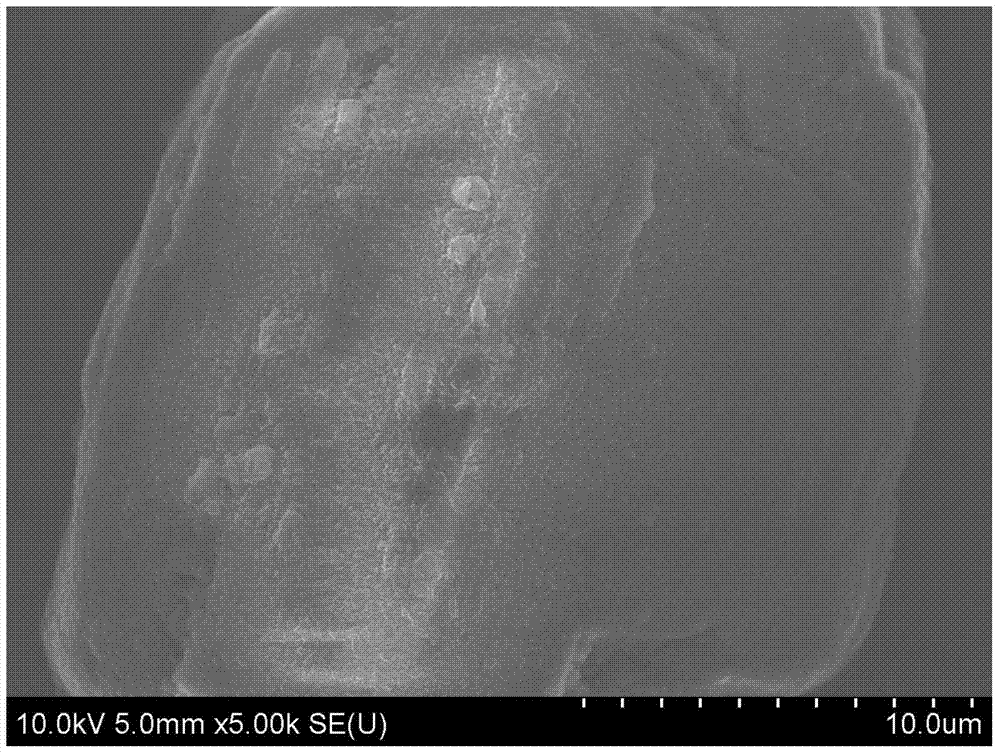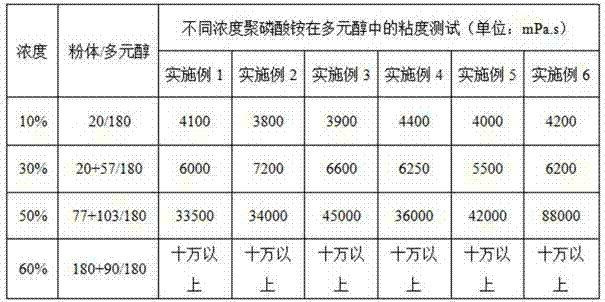Preparation method of low-viscosity microcapsule-wrapped APP (ammonium polyphosphate)
An ammonium polyphosphate and microcapsule technology, applied in the direction of dyeing polymer organic compounds, fibrous fillers, etc., can solve the problems of poor flame retardant durability, thorn-like powder, and poor flowability, and achieve excellent Effects of flowability and compatibility, average particle size, excellent electrical properties
- Summary
- Abstract
- Description
- Claims
- Application Information
AI Technical Summary
Problems solved by technology
Method used
Image
Examples
preparation example Construction
[0026] A method for preparing ammonium polyphosphate wrapped in low-viscosity microcapsules, comprising the following steps: in a reaction kettle, dispersing melamine-formaldehyde resin prepolymer and ammonium polyphosphate in a solvent, adding a curing agent solution dropwise, after the dropwise addition, Reflux reaction for 0.5~5h, then cool down to 40~50°C, then add end-capping agent dropwise, after dropwise addition, keep warm for 0.5~3h, cool to room temperature, then filter, wash, drain, use rake dryer, Dry under reduced pressure for 6-24 hours to obtain ammonium polyphosphate powder wrapped in microcapsules.
[0027] The mass ratio of ammonium polyphosphate, melamine formaldehyde resin prepolymer and solvent is 1:0.05~0.20:1.5~3.0.
[0028] The curing agent is at least one of ammonium chloride, diammonium hydrogen phosphate, ammonium hydrogen phosphate, sodium dihydrogen phosphate, potassium dihydrogen phosphate acid salt, citric acid, and acetic acid.
[0029] The cap...
Embodiment 1
[0035] In a 200L reactor with a stirring paddle and a reflux device, disperse 20kg of melamine-formaldehyde resin prepolymer CS303 and 200kg of ammonium polyphosphate in a mixed solvent of 200kg of water and 100kg of acetone, and add 0.1kg of curing agent dropwise Ammonium chloride (made into 20wt% aqueous solution), after the dropwise addition, seal the reactor well, raise the temperature to reflux temperature, keep it warm for 3h, then cool down to 50°C, add 0.1kg of methanol dropwise, after the dropwise addition, keep it warm for 1h, and react Finished, cooled to room temperature, then centrifuged, washed with a solvent, dried, and aged and dried at 80°C for 6 hours under reduced pressure using a rake dryer to obtain ammonium polyphosphate powder wrapped in microcapsules.
Embodiment 2
[0037] In a 200L reactor with a stirring paddle and a reflux device, 10kg of melamine formaldehyde resin prepolymer 5830 and 200kg of ammonium polyphosphate were dispersed in 350kg of DMF solvent, and 0.2kg of curing agent diammonium hydrogen phosphate ( 20wt% aqueous solution), after the dropwise addition, seal the reactor well, raise the temperature to reflux temperature, keep it warm for 2h, then cool down to 60°C, add 0.1kg of ethanol dropwise, after the dropwise addition, keep warm for 1.5h, the reaction is over, cool to room temperature, then centrifuged, washed with a solvent, dried, and aged and dried at 120° C. for 6 hours under reduced pressure using a rake dryer to obtain ammonium polyphosphate powder wrapped in microcapsules.
PUM
 Login to View More
Login to View More Abstract
Description
Claims
Application Information
 Login to View More
Login to View More - R&D
- Intellectual Property
- Life Sciences
- Materials
- Tech Scout
- Unparalleled Data Quality
- Higher Quality Content
- 60% Fewer Hallucinations
Browse by: Latest US Patents, China's latest patents, Technical Efficacy Thesaurus, Application Domain, Technology Topic, Popular Technical Reports.
© 2025 PatSnap. All rights reserved.Legal|Privacy policy|Modern Slavery Act Transparency Statement|Sitemap|About US| Contact US: help@patsnap.com



